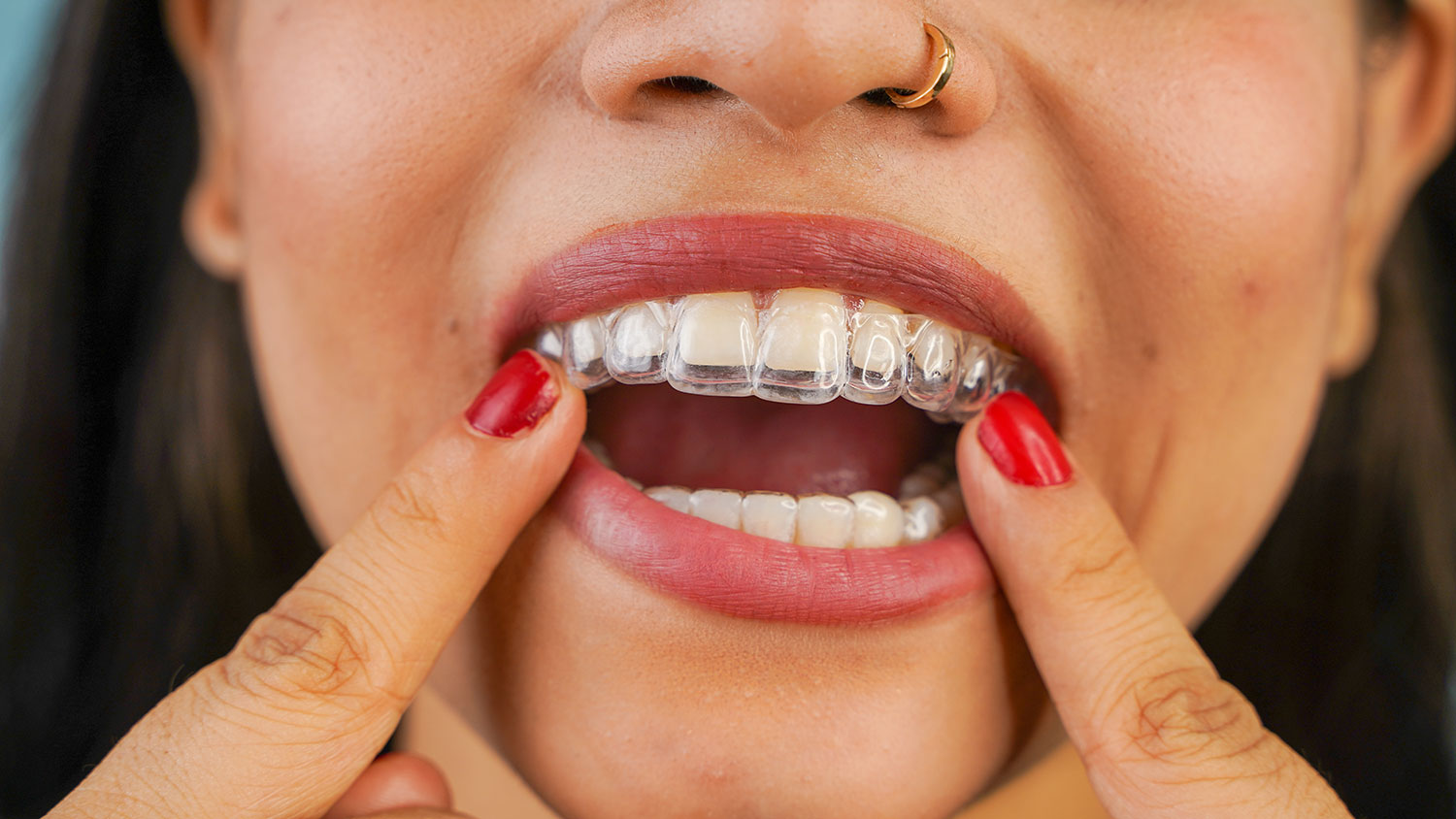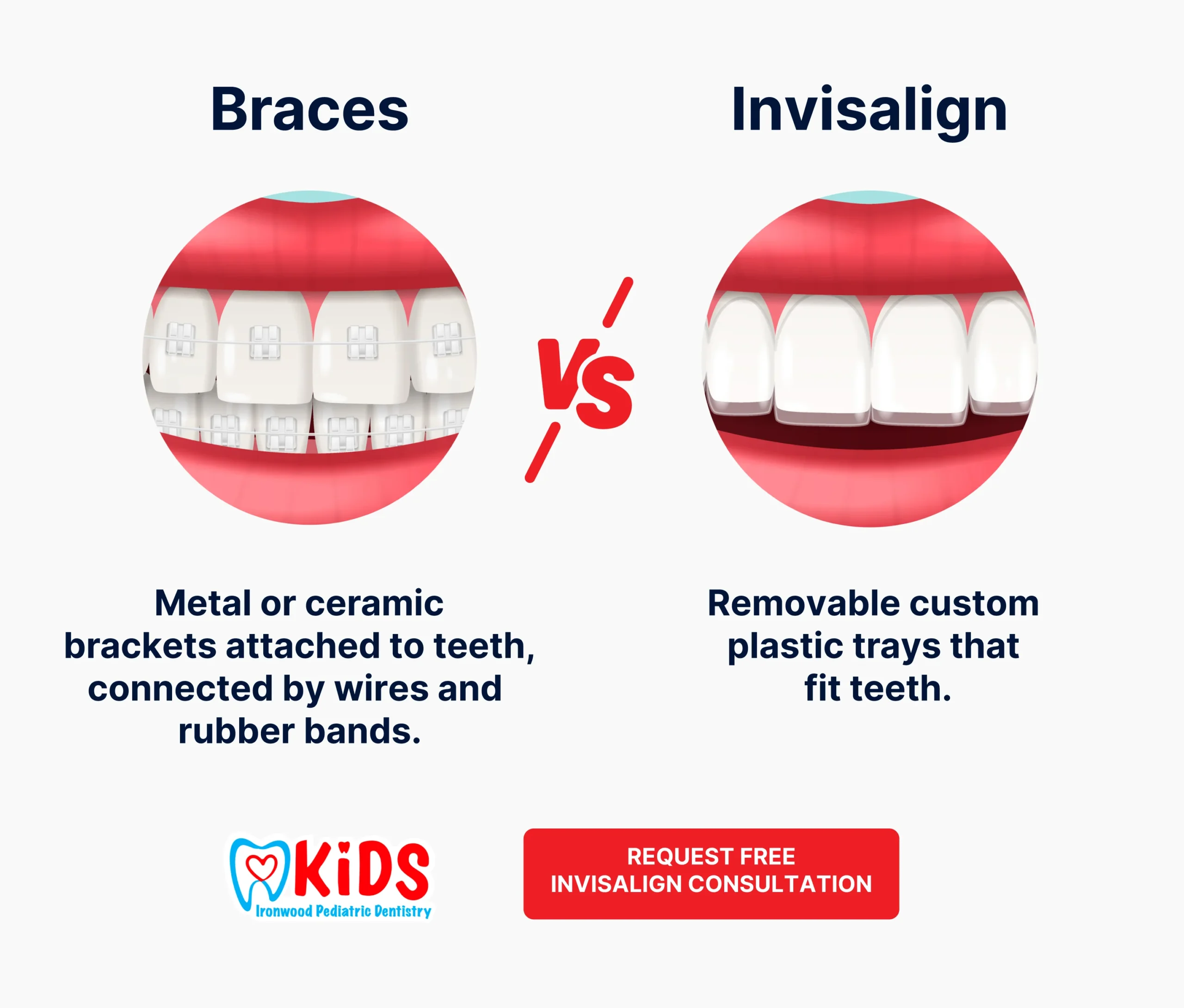Preserving Oral Health While Making Use Of Invisalign: Tips for a Smooth Experience
Preserving Oral Health While Making Use Of Invisalign: Tips for a Smooth Experience
Blog Article
Invisalign vs. Traditional Dental braces: Which Alternative Is Right for You?
When taking into consideration orthodontic treatment, the choice in between Invisalign and conventional dental braces offers a number of important variables that merit mindful examination. Invisalign uses a discreet alternative with removable aligners, while traditional dental braces give a more noticeable yet efficient option for extreme misalignment. Each alternative incorporates distinct advantages and drawbacks connected to aesthetics, convenience, therapy period, and cost. Recognizing these nuances is essential for making an educated decision that lines up with your individual choices and way of life. The inquiry remains: which choice will finest fulfill your orthodontic needs and expectations?
Summary of Treatment Choices

In comparison, conventional dental braces contain metal braces and cords that are bonded to the teeth. This technique applies continuous stress in time to accomplish positioning. While effective for complex orthodontic problems, typical dental braces require regular visits for modifications and can present obstacles in keeping oral health due to the difficulty of cleaning up around brackets and cables.
Both alternatives have their advantages, and the option commonly rests on certain oral problems, way of living choices, and client compliance. Eventually, speaking with an orthodontic professional is critical for figuring out one of the most appropriate therapy plan tailored to individual needs. Understanding the subtleties of each alternative can significantly influence the general success of orthodontic treatment.
Visual Factors To Consider
A significant variable influencing the selection in between Invisalign and traditional dental braces is the aesthetic charm each therapy uses. Invisalign aligners are crafted from clear plastic, making them essentially unseen when put on.
On the other hand, traditional braces contain steel brackets and cables, which can be extra visible. While advancements in orthodontic innovation have resulted in the development of smaller sized brackets and colored elastics, typical braces still preserve an even more conspicuous profile. For some individuals, the exposure of dental braces may prevent them from looking for necessary treatment.
Inevitably, the option between Invisalign and traditional dental braces may hinge on personal choices concerning looks. Patients who focus on discretion commonly lean towards Invisalign, while those who are much less concerned about exposure might go with traditional braces. Understanding the aesthetic ramifications of each alternative is important for making a notified decision that lines up with one's way of life and preferences.
Comfort and Convenience

In terms of ease, Invisalign aligners are detachable, making it possible for people to appreciate their favorite foods without restriction and preserve ideal oral hygiene. Cleaning and flossing are streamlined, as the aligners can be secured during these regimens, whereas conventional dental braces require cautious navigating around wires and braces.
In comparison, typical braces necessitate normal modifications, making them less practical for those with hectic timetables. Generally, the comfort and comfort of Invisalign make it an appealing option for numerous individuals seeking orthodontic therapy.
Treatment Period and Effectiveness
While both Invisalign and typical braces work in correcting dental imbalances, the duration of treatment can differ substantially in between both alternatives. Commonly, Invisalign therapy can take anywhere from 12 to 18 months, depending upon the intricacy of the situation. The clear aligners function by gradually moving teeth right into their wanted positions, and routine follow-ups with an orthodontist aid guarantee development continues to be on track.
On the other hand, standard dental braces commonly call for a longer dedication, usually ranging from 18 months to three years. This Related Site is because of their fixed nature and using brackets and cables, which can be extra effective for severe misalignments and intricate instances (Invisalign). The treatment efficiency of standard dental braces is well-documented, as they permit for exact changes and better control over tooth motion
Inevitably, the selection in between Invisalign and typical dental braces might pivot visit this page on both the expected treatment duration and the specific oral concerns available. Consulting with an orthodontist is critical, as they can provide tailored suggestions based on individual demands, ensuring the picked approach lines up with wanted end results and durations.
Cost Contrast and Insurance Options
Price plays a substantial role in the decision-making process for people considering orthodontic therapy, whether going with Invisalign or conventional braces. Generally, the expense of Invisalign varieties from $3,000 to $8,000, while standard dental braces usually cost in between $2,000 and $6,000. Aspects influencing these costs include the intricacy of the case, the duration of treatment, and geographical place.
Insurance coverage can significantly impact out-of-pocket expenses. Numerous oral insurance policy plans provide partial protection for orthodontic treatments, but the specifics can vary extensively. It is vital for clients to assess their insurance coverage plans to figure out the extent of protection for either alternative. Typically, standard dental braces may be much more regularly covered by insurance coverage strategies compared to Invisalign, which some insurance firms categorize as a cosmetic procedure.
Additionally, several orthodontic methods use adaptable layaway plan, making both therapy alternatives more obtainable. Patients should ask about potential funding choices and price cuts for upfront payments. Assessing the overall expense, consisting of insurance advantages and payment plans, is vital for making an More Info informed decision that lines up with both aesthetic choices and spending plan considerations.

Conclusion
In recap, the choice in between Invisalign and conventional braces rests on multiple variables, including visual preferences, comfort, therapy duration, and expense. Invisalign offers a very discreet, removable option that promotes oral health and nutritional versatility, while typical braces may be better for complex oral issues and usually come at a reduced rate point. Ultimately, consultation with an orthodontist is necessary to examine individual situations and establish one of the most proper treatment choice for accomplishing optimum oral alignment.
When thinking about orthodontic treatment, the option between Invisalign and standard dental braces offers several important elements that warrant careful assessment.Contrasting Invisalign and standard dental braces discloses distinctive therapy options for orthodontic correction.While both Invisalign and standard dental braces are efficient in correcting oral imbalances, the period of treatment can differ significantly in between the 2 options.Expense plays a considerable function in the decision-making procedure for people taking into consideration orthodontic therapy, whether choosing for Invisalign or typical braces.In summary, the choice between Invisalign and traditional dental braces hinges on numerous variables, consisting of visual preferences, convenience, therapy duration, and cost.
Report this page